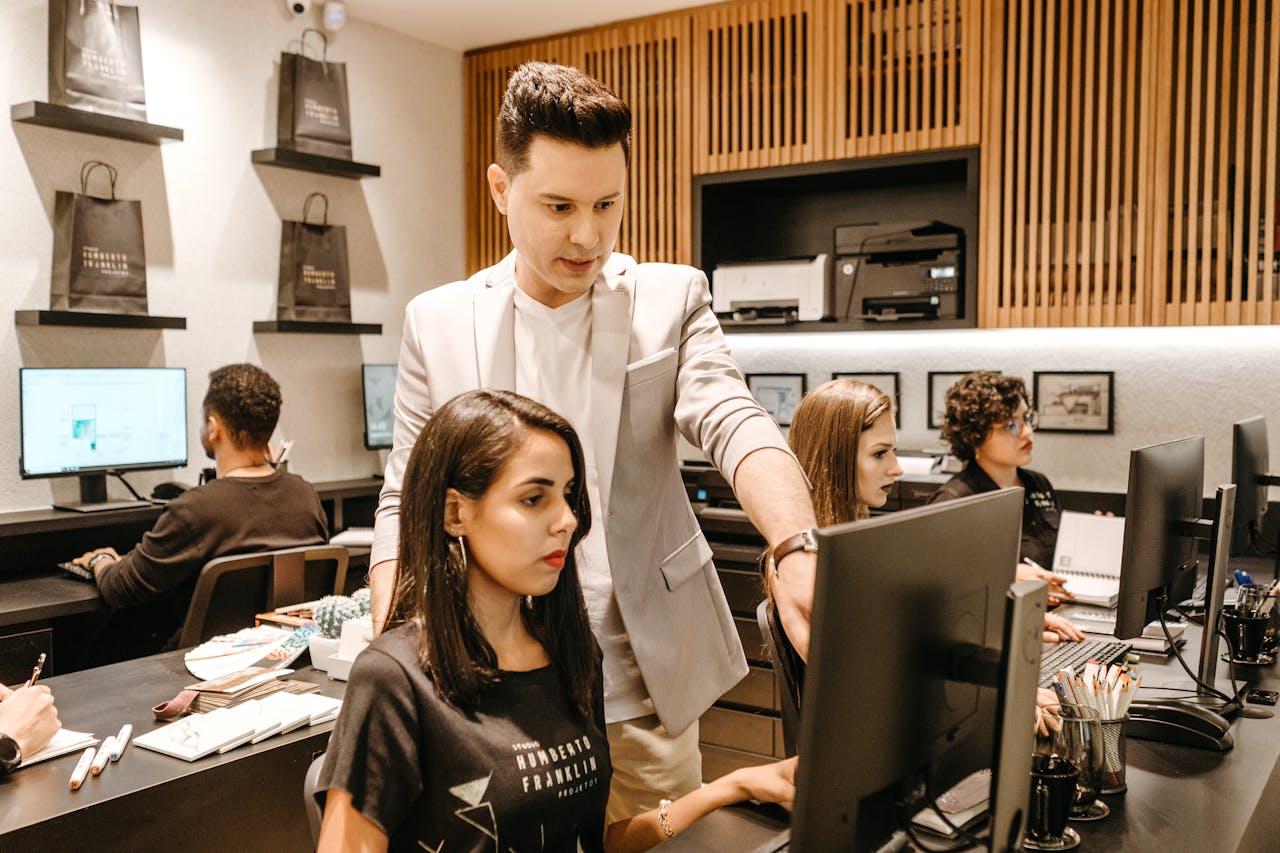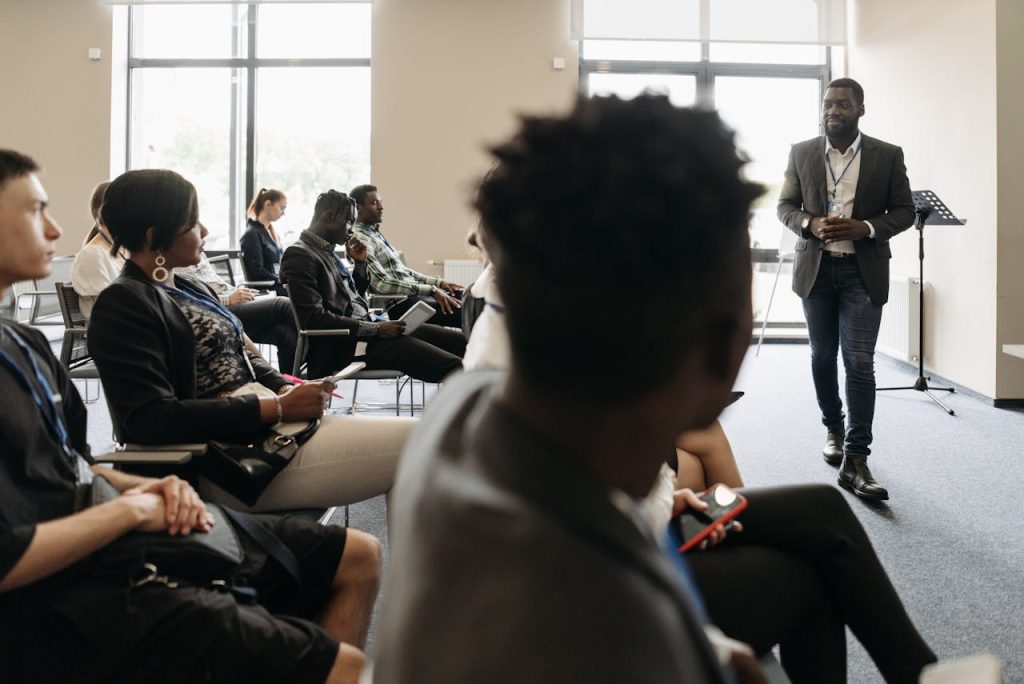Employee development sits at the heart of organisational success. When training resonates, it boosts engagement, sharpens skills, and drives measurable results. Yet many programmes fail to create lasting change – a challenge costing businesses time, resources, and momentum.
We’ve discovered that truly effective education aligns with how brains naturally retain information. Through research-backed strategies for making learning stick, teams can transform forgettable sessions into experiences employees actually apply. This approach benefits both staff seeking growth and organisations needing reliable compliance.
The stakes couldn’t be higher. With 55% of workers reporting inadequate workplace training (Brandon Hall Group), poorly designed programmes risk disengagement and knowledge gaps. Our focus? Developing methods that help people internalise critical skills rather than temporarily memorise facts.
Key Takeaways
- Employee development directly influences workplace productivity and regulatory compliance
- “Sticky” training aligns with neurological processes for better recall
- Repeated retraining indicates fundamental design flaws in educational programmes
- Lasting behaviour change requires understanding cognitive retention principles
- Effective strategies reduce long-term training costs while improving outcomes
Through this exploration, we’ll unpack practical techniques for building programmes that employees remember – and use. From spaced repetition to real-world simulations, these methods create authentic skill development that withstands time pressures and shifting priorities.

Defining a Purpose-Driven Learning Experience
Successful training begins by mapping its purpose to real workplace needs. We start with open dialogues between stakeholders and educators to pinpoint gaps between current skills and operational demands. This alignment ensures programmes deliver measurable improvements rather than generic content.
Understanding the Why Behind Our Learning Objectives
Take compliance teams versus customer service staff. The former needs recall-based methods to memorise regulations, while the latter thrives through simulated customer interactions. By asking, “What behaviours must change?”, we select strategies that match each role’s reality.
| Department | Key Requirement | Optimal Training Method |
|---|---|---|
| Compliance | Regulatory recall | Microlearning quizzes |
| Sales | Negotiation skills | Role-play scenarios |
| IT Support | Troubleshooting | Virtual lab simulations |
Aligning Stakeholder Needs with Learning Goals
We once redesigned onboarding for a logistics firm where new hires struggled with inventory software. Through learning experience design workshops, we shifted from theory-heavy sessions to guided software exploration. Result? 63% faster task mastery.
This approach transforms training from information delivery to problem-solving partnerships. When learners see immediate job relevance, retention becomes instinctive – not forced.
Practical Techniques: How to design learning experiences that stick
The secret to lasting knowledge lies in how training is structured and delivered. Our approach combines cognitive science with workplace realities to create programmes employees genuinely retain.
Creating Consistent and Cohesive Content
Imagine call centre staff juggling five systems for different queries. Chaos breeds forgetfulness. We standardise support pathways so every scenario uses the same troubleshooting framework. This consistency helps convert fragmented lessons into reliable mental models.
Blending Multiple Modalities for Engagement
Variety isn’t just the spice of life – it’s neuroscience in action. Mixing eLearning, live webinars, and video content creates stronger neural connections. One healthcare client saw 40% better protocol recall after replacing lectures with a blended programme featuring strategies for sticky learning.
Incorporating Interactive and Active Learning Methods
Passive watching rarely sparks change. We pepper courses with:
- Real-time problem-solving exercises
- Branching scenario simulations
- Peer-led case study debates
A retail team using these methods reduced till errors by 67% in three months. When hands meet mind, lessons stick.

Enhancing Retention Through Real-World Relevancy and Application
Emotional connections transform fleeting facts into lasting skills. Our brains prioritise information tied to meaningful contexts – a principle proven when engineers recalled 89% more safety protocols after scenario-based drills versus textbook study.
Building Connections with Experience and Emotions
That retail cashier who aced checkout errors after role-playing angry customers? Their training tapped into emotional memory anchors. We use similar approaches by linking new content to existing workplace narratives. When staff recognise their daily challenges in training materials, engagement becomes personal rather than obligatory.
Consider these impact comparisons:
| Training Type | Retention Rate | Job Application Success |
|---|---|---|
| Lecture-Based | 22% | 18% |
| Simulation Drills | 67% | 74% |
From Classroom Concepts to Workplace Wins
The 70:20:10 model isn’t just theory – we’ve seen it drive results. A logistics team mastered new routing software through guided practice during actual dispatches. Within weeks, their error rate dropped 41%.
Three strategies make knowledge stick:
- Job-shadowing with instant feedback loops
- Custom scenarios mirroring real client issues
- Peer-led problem-solving sessions
When people use skills immediately, neural pathways strengthen. It’s why our hospitality clients now run menu training in actual kitchens rather than conference rooms.
Conclusion
Creating lasting educational impact demands strategic alignment between learning professionals and stakeholders. By streamlining resources and innovating delivery, we build programmes people remember. This collaboration turns information into skills that drive change.
Clear purpose remains fundamental. Training addressing workplace challenges engages learners deeply. Leadership buy-in follows when programmes show measurable improvements.
Innovation transforms traditional methods. Interactive simulations create memorable experiences, helping content stick through practical contexts. These approaches move beyond fact-sharing to genuine behaviour shifts.
Evidence-based strategies prove their worth. Organisations see returns as learning initiatives reduce errors and boost efficiency. What begins as training evolves into strategic advantage.
The journey starts with simple steps: audit existing materials, pilot microlearning modules, and measure real-world application. When we prioritise retention over completion rates, everyone wins.



